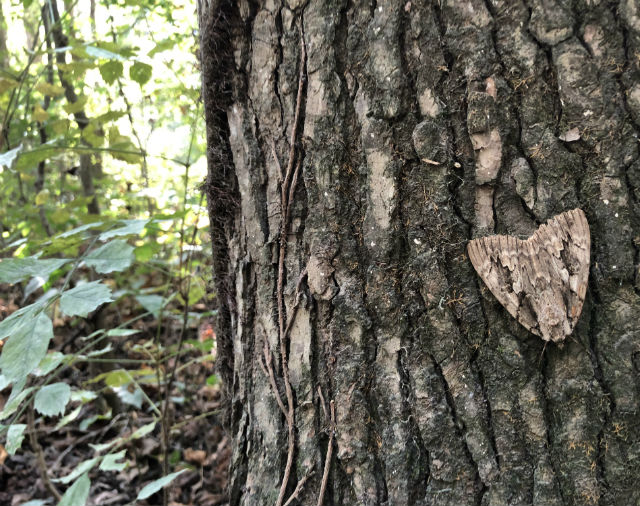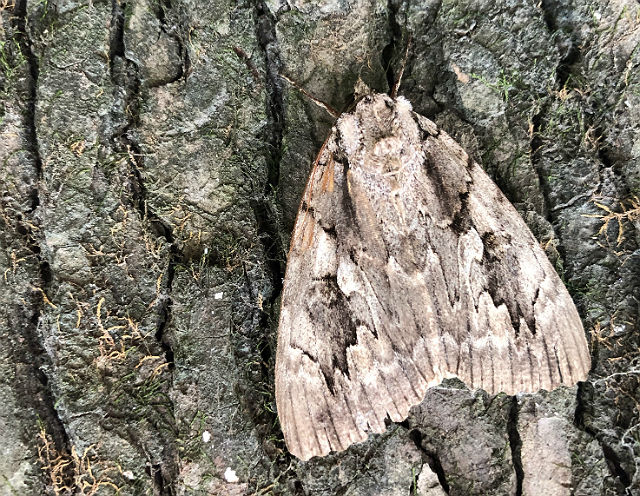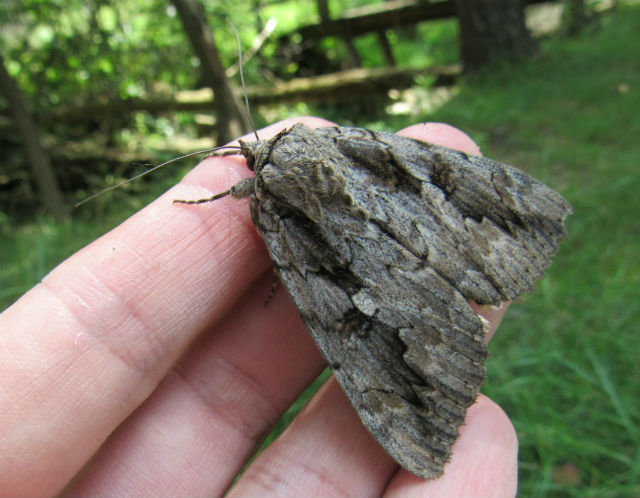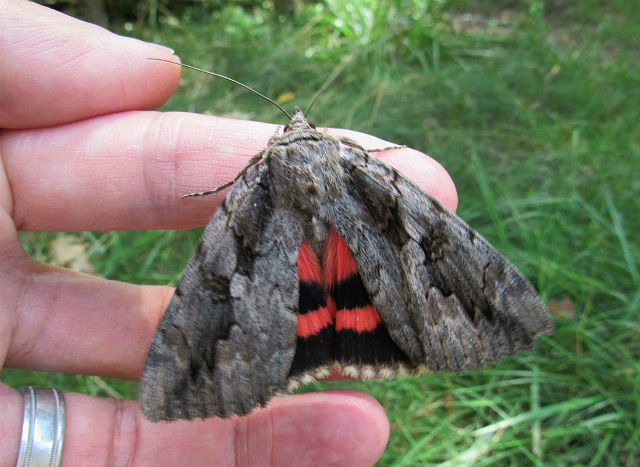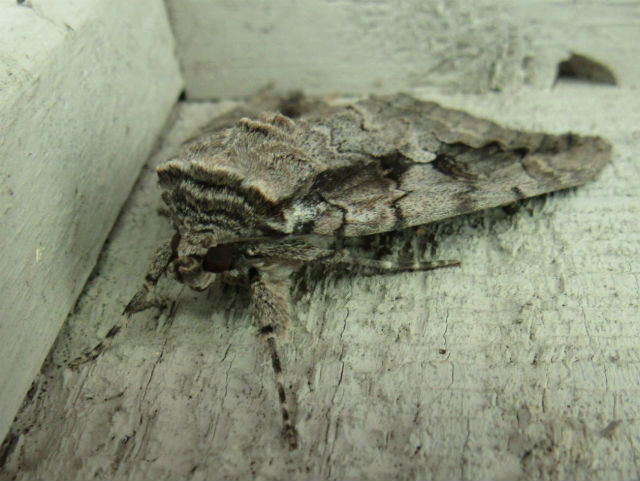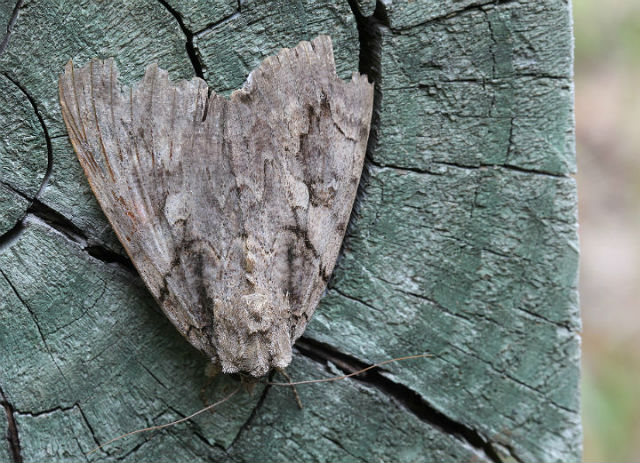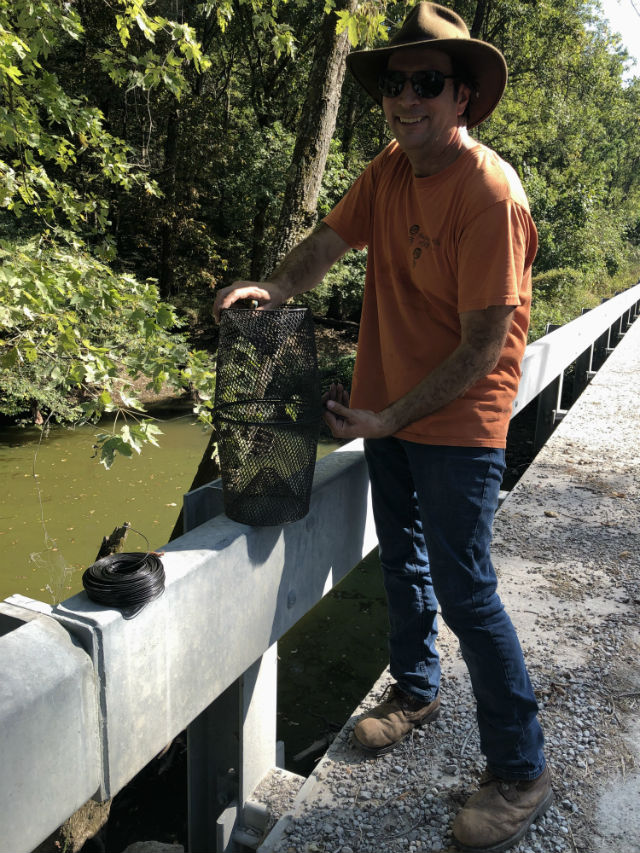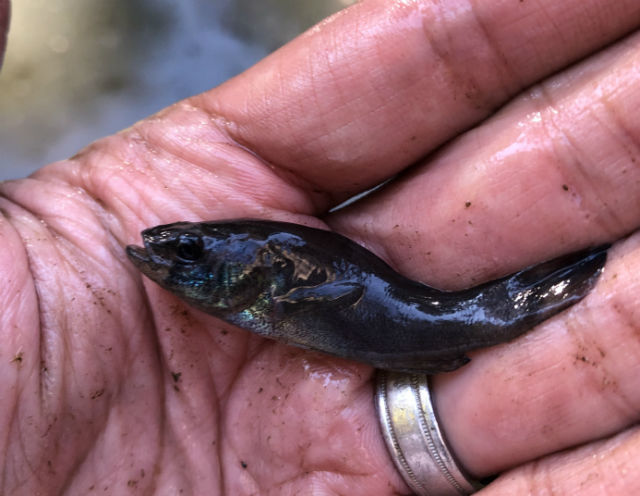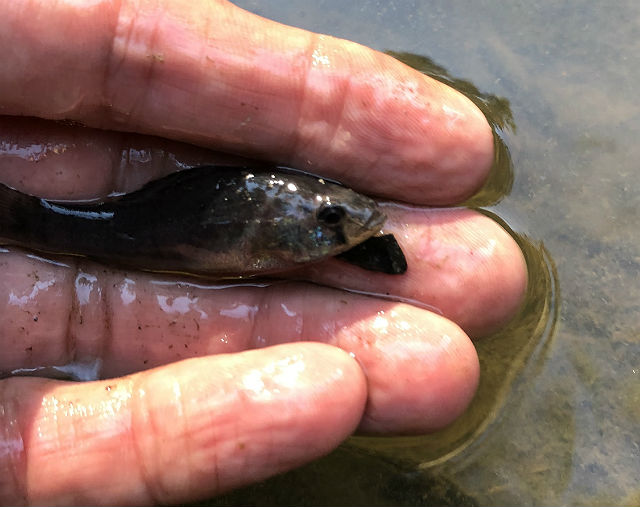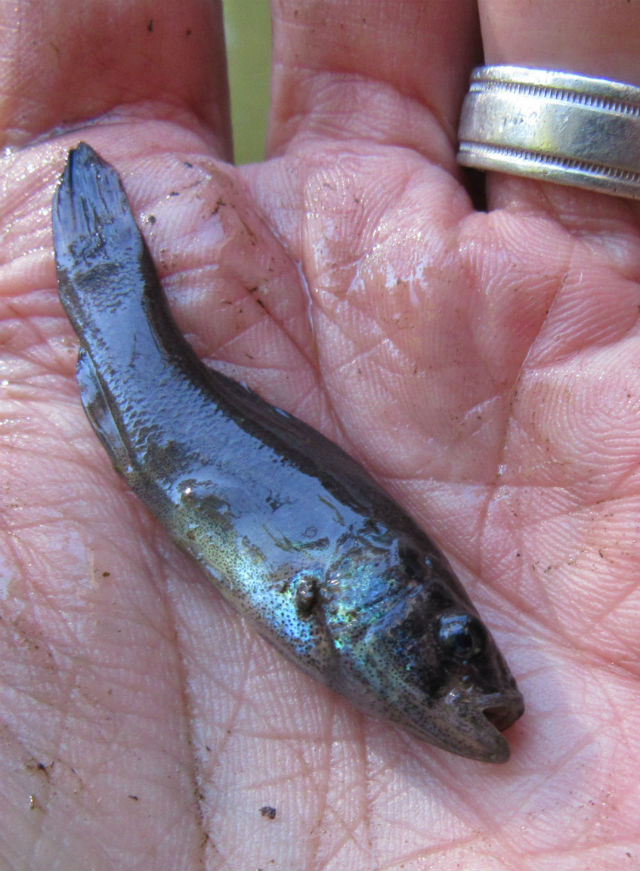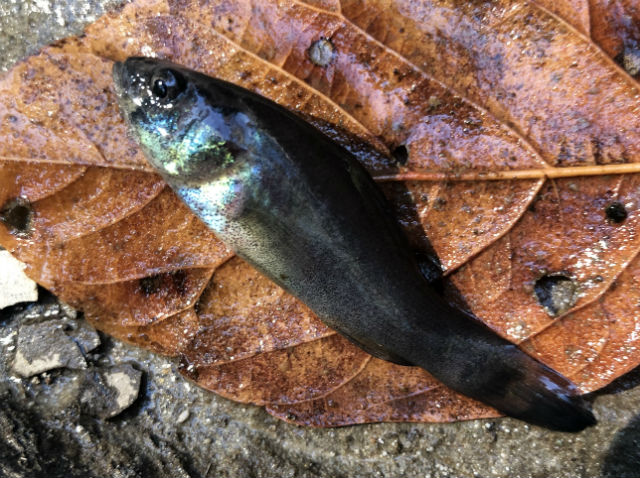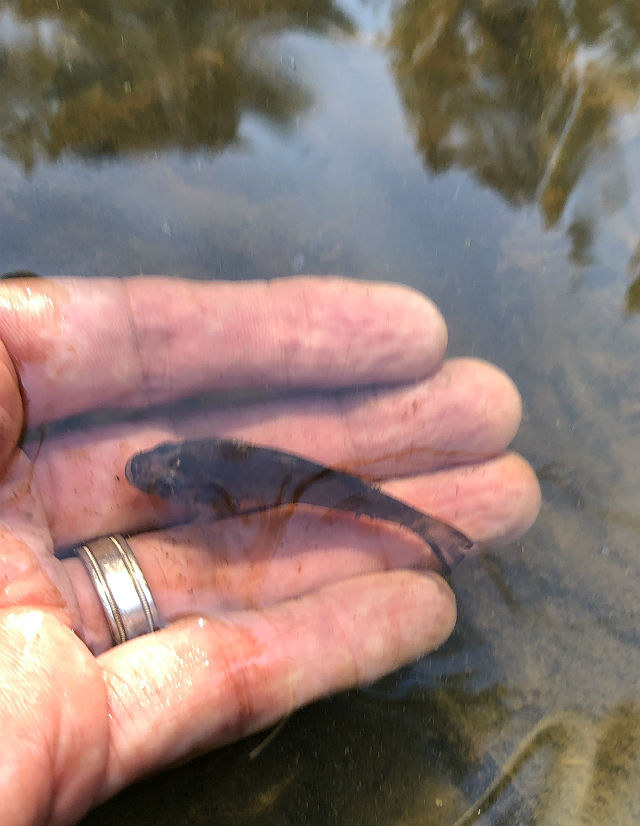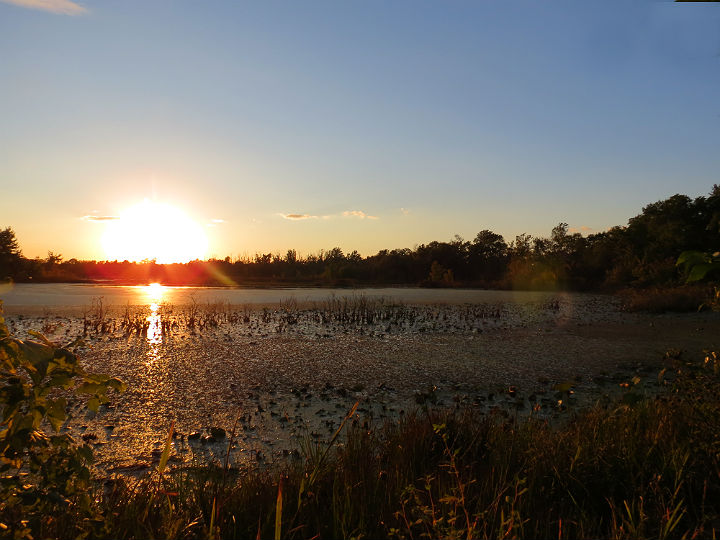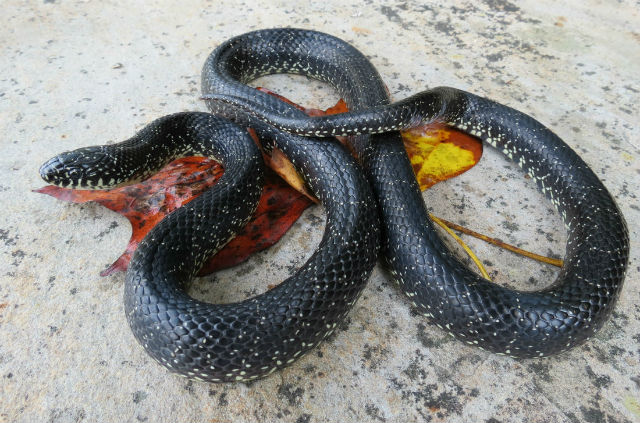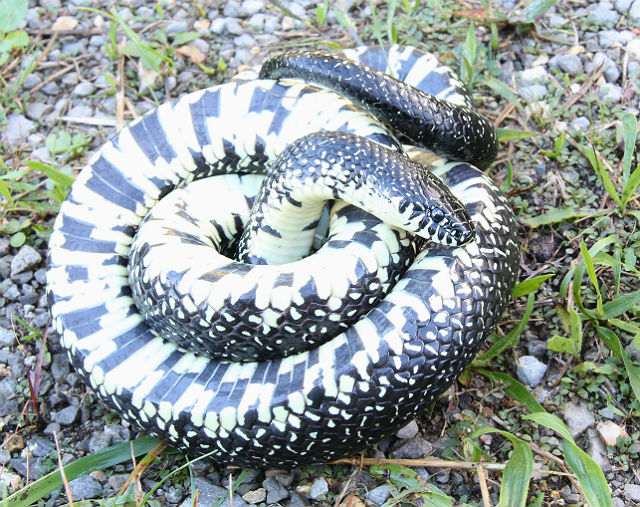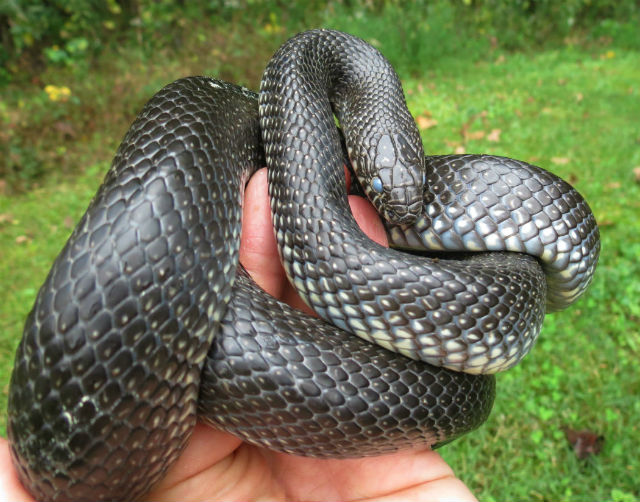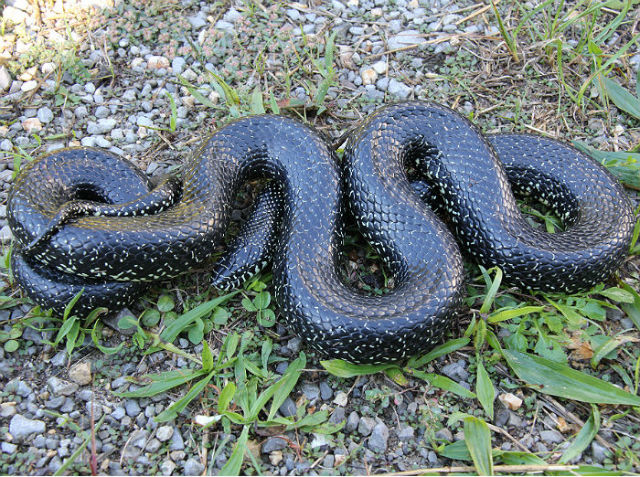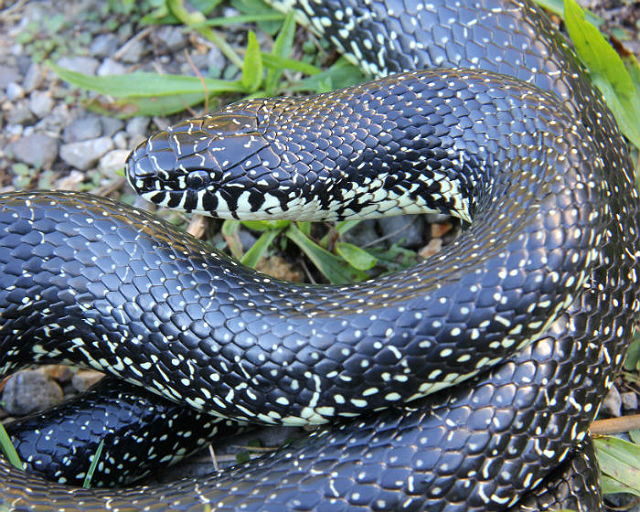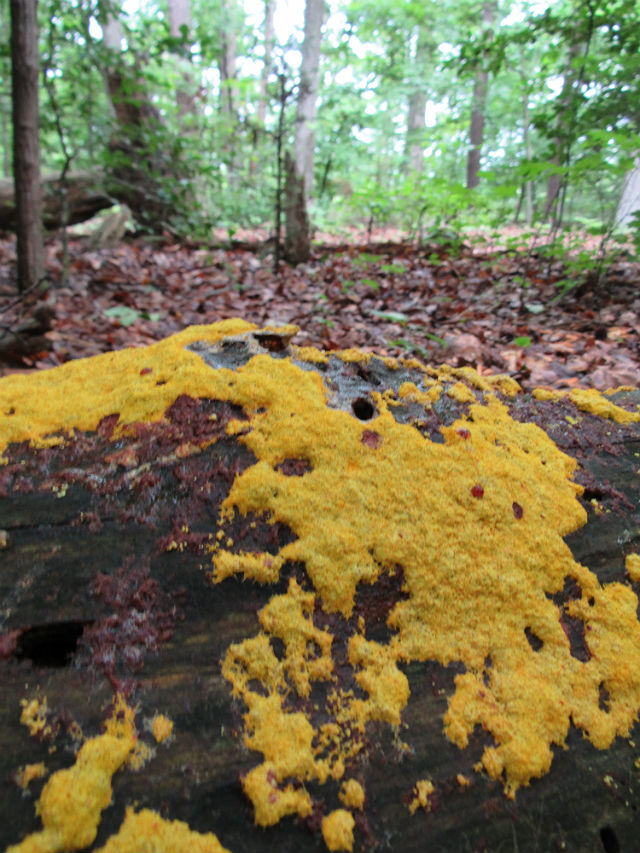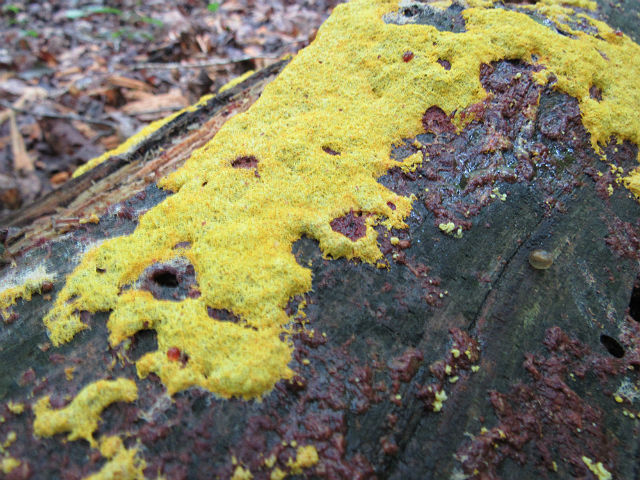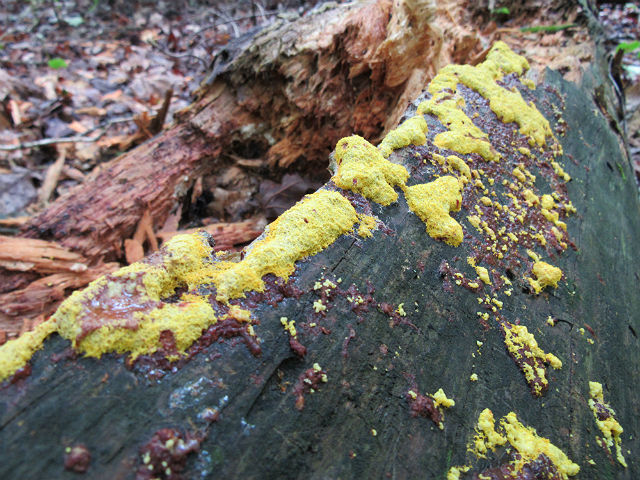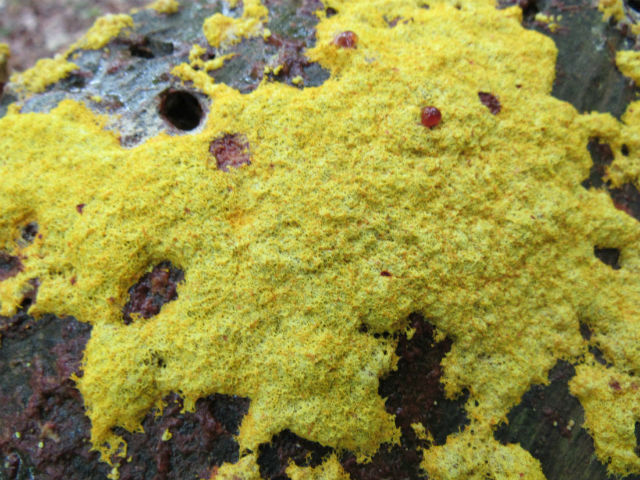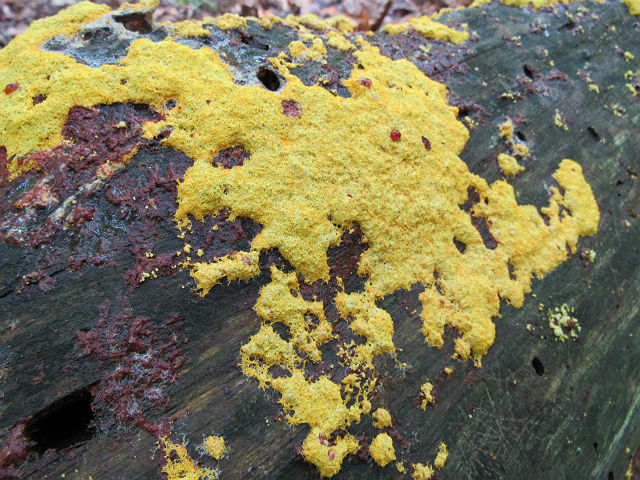While recently hiking through a forest in southern Illinois, I noticed this cool creature blending in with the bark of a tree. I occasionally also find this relatively large moth in my yard.
“Underwing Moth” is a common name for a diverse group of moths with distinctive wing patterns. There are more than 200 species of underwings, the majority occurring in eastern North America.
While at rest, the well-camouflaged forewings’ various shades of gray and brown allow the insect to blend in with its surroundings. Most underwing moths are active at night and spend the day resting upside down.
When frightened, it exposes its underwings. It is thought that their bright colors, arranged in roughly concentric markings, resemble the eyes of a predatory animal, and this may confuse whatever wants to eat the moth for a few seconds, while it makes a hasty retreat.
The Sweetheart Underwing Moth’s habitat is forested areas. It is particularly common in Cottonwood (which their caterpillars feed on) stands along rivers, creeks and in urban areas.
I always enjoy coming across this impressive invertebrate whether it be out-of-state or in my own backyard.

